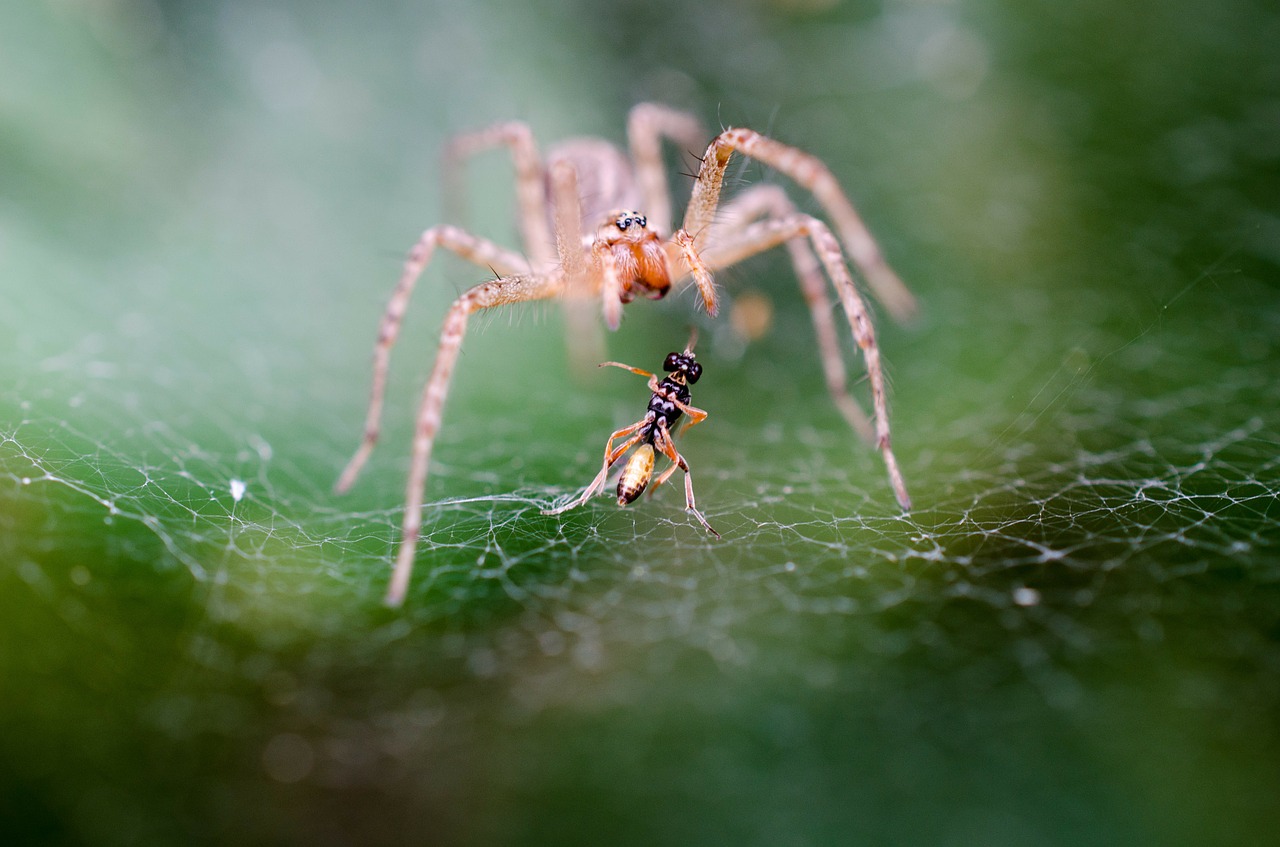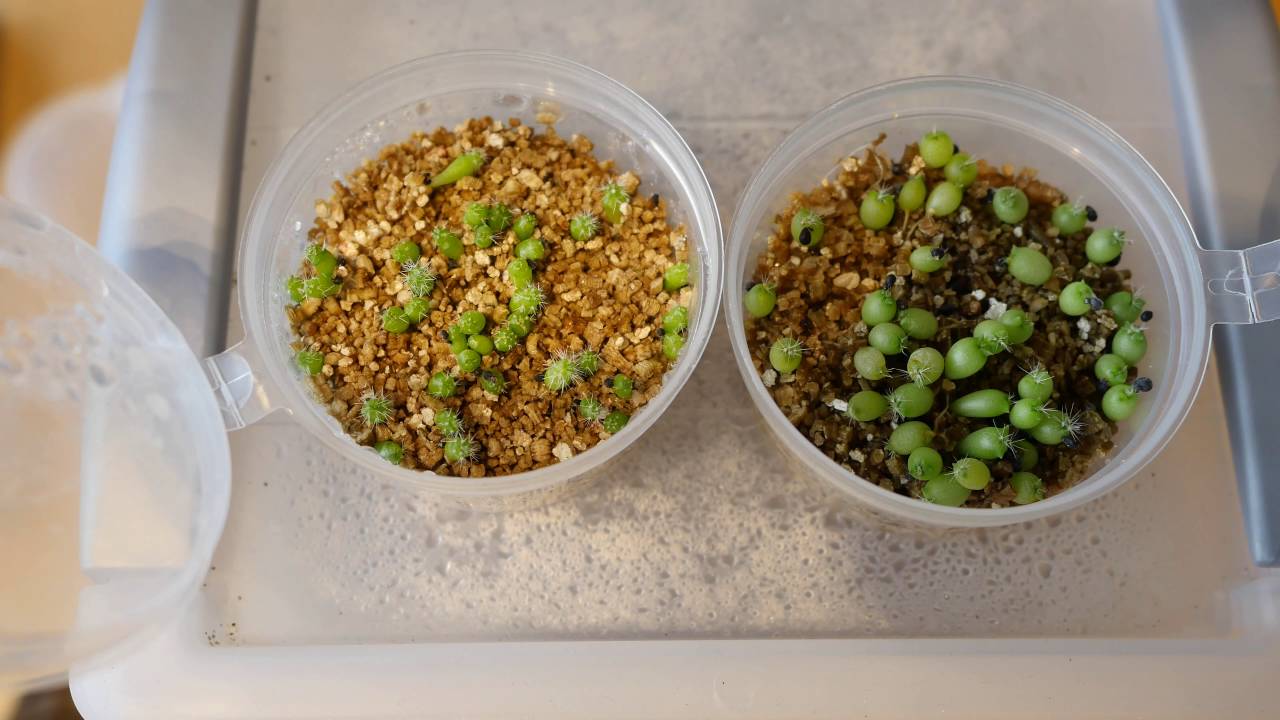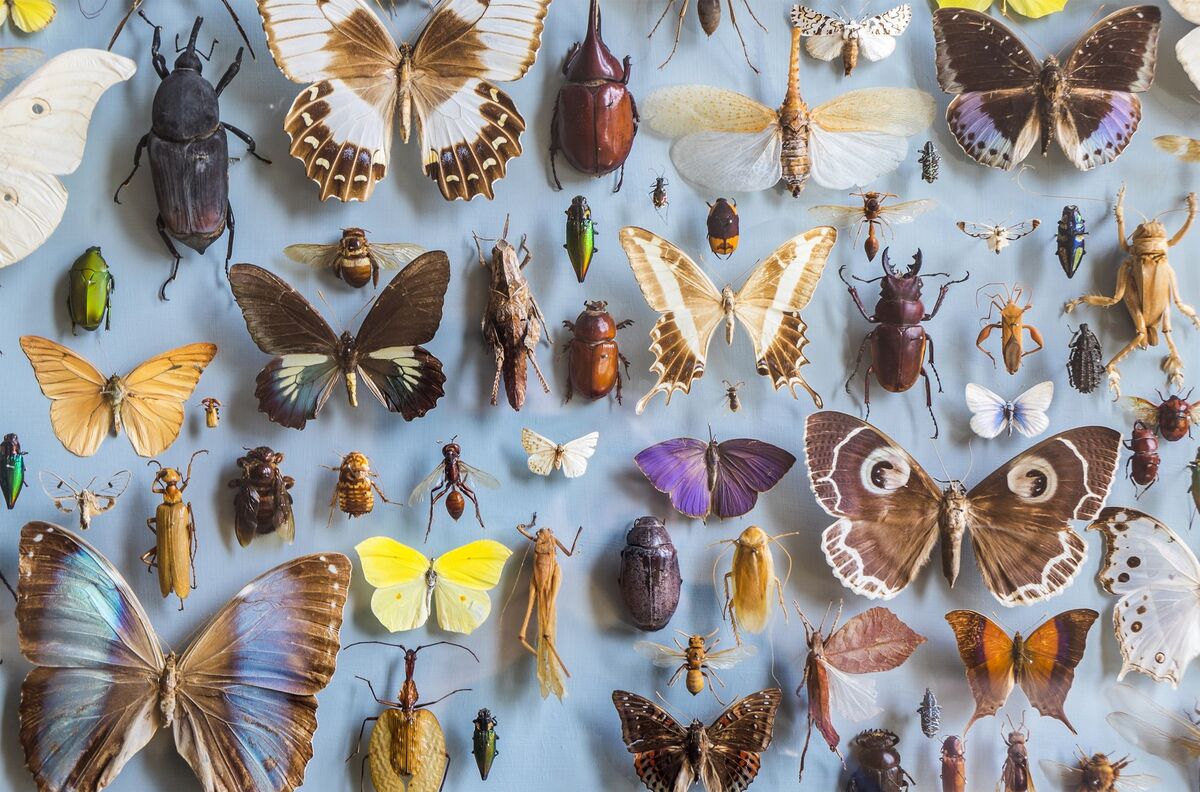Home>Gardening News and Trends>Latest News>How Does Horticulture Differ From Agriculture Quizlet


Latest News
How Does Horticulture Differ From Agriculture Quizlet
Modified: January 22, 2024
Discover the key differences between horticulture and agriculture in this latest news quizlet. Gain a deeper understanding of these two related but distinct fields.
(Many of the links in this article redirect to a specific reviewed product. Your purchase of these products through affiliate links helps to generate commission for Chicagolandgardening.com, at no extra cost. Learn more)
Table of Contents
Introduction
When it comes to feeding and nourishing the world’s population, two key practices come to mind: horticulture and agriculture. These terms are often used interchangeably, but they actually refer to two distinct fields of study and practice. Understanding the differences between horticulture and agriculture is fundamental to appreciating the complexity and diversity of the agricultural industry.
Horticulture and agriculture both involve the cultivation of plants for various purposes, such as food production, landscape design, and ornamental purposes. However, despite these similarities, there are significant differences in terms of objectives, practices, scale, products, and impact.
In this article, we will explore the nuances of horticulture and agriculture, shedding light on their unique characteristics.
Let’s start by defining horticulture. Horticulture can be defined as the science and art of cultivating and managing plants, particularly those used for ornamental purposes, landscaping, and gardening. It encompasses a wide range of activities, including plant propagation, soil management, pest control, and plant nutrition. Horticulture also includes the cultivation of fruits, vegetables, herbs, and flowers, both for commercial and personal use.
Agriculture, on the other hand, is a broader term that refers to the practice of cultivating plants and raising animals for various purposes, primarily to produce food, fiber, and other agricultural products. It involves a multitude of activities such as crop cultivation, livestock rearing, soil preparation, irrigation, fertilization, pest control, and harvesting.
While both horticulture and agriculture involve plant cultivation, their objectives and practices differ significantly. Horticulture focuses more on the aesthetic and recreational aspects of growing plants, whereas agriculture primarily emphasizes food production and the provision of essential resources.
Stay tuned as we delve deeper into the comparison between horticulture and agriculture, exploring how they differ in terms of objectives, practices, scale, products, and impact on the environment and society as a whole.
Definition of Horticulture
Horticulture can be defined as the science and art of cultivating and managing plants, particularly those used for ornamental purposes, landscaping, and gardening. This field encompasses a wide range of activities, including plant propagation, soil management, pest control, and plant nutrition.
One of the key aspects of horticulture is the cultivation of fruits, vegetables, herbs, and flowers, both for commercial and personal use. Horticulturists often focus on growing high-quality, visually appealing plants with desirable characteristics such as color, fragrance, and taste. They strive to optimize plant growth by carefully selecting plant varieties, controlling environmental factors like temperature and light, and implementing appropriate irrigation and fertilization techniques.
In addition to ornamental plants and food crops, horticulture also includes the cultivation of medicinal plants, herbs used for aromatherapy, and plants used in the production of essential oils. The knowledge and skills employed in horticulture extend beyond just planting and tending to plants; they also encompass landscape design, maintenance, and the creation of aesthetically pleasing outdoor spaces.
Horticulture plays a vital role in enhancing the beauty of urban and rural areas through landscaping projects. Skilled horticulturists can create visually appealing gardens and parks by selecting and arranging plants in a way that harmonizes with the surrounding environment. They consider factors such as color coordination, plant textures, and growth patterns to create visually pleasing and sustainable landscapes.
Furthermore, horticulture goes beyond the growing and arranging of plants. It also involves conducting research to develop new plant varieties, improve cultivation techniques, and discover innovative ways to address environmental challenges. Horticulturists contribute to the advancement of knowledge in areas such as plant breeding, genetic engineering, and crop protection.
In summary, horticulture combines science and art to cultivate and manage plants for various purposes, including ornamental, landscaping, and gardening uses. It encompasses a wide range of activities and expertise, from plant propagation and soil management to landscape design and research. Horticulture plays a crucial role in beautifying our surroundings, providing food and resources, and advancing scientific knowledge in plant-related fields.
Definition of Agriculture
Agriculture is a broad term that encompasses the practice of cultivating plants and raising animals for various purposes, primarily to produce food, fiber, and other agricultural products. It is a complex and multifaceted field that involves a range of activities, including crop cultivation, livestock rearing, soil preparation, irrigation, fertilization, pest control, and harvesting.
The primary objective of agriculture is to sustainably produce an abundant and diverse food supply to feed the world’s growing population. This involves the cultivation of staple crops such as wheat, rice, corn, and potatoes, as well as specialty crops like fruits, vegetables, and spices, which contribute to the nutritional and culinary diversity of global cuisine.
In addition to food production, agriculture also encompasses the cultivation of plants for fiber, such as cotton and hemp, used in the production of textiles and other materials. Moreover, agriculture plays a crucial role in the production of biofuels, pharmaceutical ingredients derived from plants, and other non-food agricultural products.
Agricultural practices vary across regions and climates, as farmers adapt their techniques to suit local conditions. This includes soil preparation, which often involves tilling, composting, or applying organic and inorganic fertilizers to promote plant growth. Irrigation methods, such as flood irrigation or drip irrigation, are employed to provide water to crops in regions with limited rainfall or arid climates.
The management of pests and diseases is another key aspect of agriculture. Farmers employ various strategies to control pests and preserve crop health, including the use of chemical pesticides, integrated pest management techniques, and organic farming practices. The sustainable management of soil fertility and the prevention of soil erosion are also critical components of agricultural practices.
Agriculture is typically practiced on a larger scale compared to horticulture. Farmers often own or lease extensive areas of land, and agricultural operations may involve large machinery, such as tractors and combine harvesters, to facilitate planting, harvesting, and processing activities. Livestock rearing is another integral part of agriculture, with farmers raising animals for meat, milk, eggs, and other animal-derived products.
Agriculture is essential for ensuring food security, economic stability, and rural development. It plays a crucial role in providing employment opportunities, supporting rural economies, and contributing to sustainable development. Furthermore, the field of agriculture continually evolves, incorporating advancements in technology, genetics, and sustainable practices to meet the growing demands of a changing world.
Comparison of Horticulture and Agriculture
Horticulture and agriculture are two distinct fields within the broader realm of plant cultivation and management. While they share some similarities, such as the cultivation of plants, they differ significantly in terms of objectives, practices, scale, products, and environmental impact.
Objectives: The primary objective of horticulture is to cultivate and manage plants for ornamental, landscaping, and gardening purposes. Horticulturists focus on growing visually appealing plants with desirable characteristics such as color, fragrance, and taste. Agriculture, on the other hand, emphasizes food production and the provision of essential resources. The main goal of agriculture is to sustainably produce an abundant and diverse food supply to feed the world’s growing population.
Practices: Horticultural practices include plant propagation, soil management, pest control, and plant nutrition. Horticulturists often utilize techniques such as grafting, pruning, and the use of specialized fertilizers to enhance plant growth. Agriculture involves a wider range of practices, including crop cultivation, livestock rearing, soil preparation, irrigation, fertilization, pest control, and harvesting. Agricultural practices are more resource-intensive and involve larger-scale operations.
Scale: Horticulture is typically practiced on a smaller scale, often in controlled environments like home gardens, greenhouses, or small-scale commercial nurseries. In contrast, agriculture is usually conducted on a larger scale, with farmers owning or leasing extensive areas of land for crop cultivation and livestock rearing.
Products: Horticulture focuses on the cultivation of fruits, vegetables, herbs, and flowers, both for personal and commercial use. Horticulturists strive to grow high-quality plants with desirable aesthetic and functional qualities. Agriculture, on the other hand, produces a wide range of crops, including staple foods such as grains (wheat, rice, corn) and specialty crops like fruits, vegetables, spices, and fiber (cotton, hemp). Agriculture also encompasses animal rearing for meat, milk, eggs, and other animal-derived products.
Environmental Impact: Both horticulture and agriculture have environmental impacts, but their magnitudes and nature differ. Horticulture, particularly in urban areas, can contribute to beautifying and greening landscapes, providing habitats for pollinators, and improving air quality. Agriculture, on the other hand, has a larger ecological footprint due to the scale of operations and the use of intensive farming practices. Agriculture can have consequences such as deforestation, water pollution from agrochemicals, and soil degradation. Implementing sustainable practices such as organic farming and precision agriculture can minimize these impacts.
In summary, while horticulture and agriculture share some similarities, such as plant cultivation, their objectives, practices, scale, products, and environmental impacts differ significantly. Understanding these differences is crucial for appreciating the diversity and complexity of the agricultural industry and creating sustainable and efficient systems for plant cultivation and resource management.
Differences in Objectives
One of the key differences between horticulture and agriculture lies in their objectives. While both fields involve plant cultivation, their ultimate goals are distinct.
Horticulture: The primary objective of horticulture is to cultivate and manage plants for ornamental, landscaping, and gardening purposes. Horticulturists focus on creating visually appealing outdoor spaces and growing plants with desirable characteristics such as color, fragrance, and taste. They strive to enhance the aesthetic qualities of plants, whether it’s through vibrant flower beds, well-manicured lawns, or artistically designed landscapes. Horticulture also includes the cultivation of fruits, vegetables, herbs, and flowers for personal use or commercial sale.
Agriculture: The main objective of agriculture is to sustainably produce an abundant and diverse food supply to meet the nutritional needs of the world’s population. Agriculture involves the cultivation of staple crops such as wheat, rice, corn, and potatoes, which form the foundation of global food security. It also encompasses the cultivation of specialty crops like fruits, vegetables, spices, and fiber. In addition to crop production, agriculture involves the rearing of livestock for meat, milk, eggs, and other animal-derived products.
The objectives of horticulture and agriculture reflect their distinct contributions to society. Horticulture enhances the beauty of our urban and rural environments, providing visual pleasure and recreational spaces. It brings nature closer to us and contributes to mental and physical well-being. Conversely, agriculture plays a fundamental role in ensuring food security and providing essential resources for human survival. It addresses one of the most basic human needs – nourishment.
While their objectives differ, both horticulture and agriculture are essential components of a sustainable and functional society. They contribute to the overall well-being and quality of life by providing aesthetic environments and a secure food supply.
Differences in Practices
Horticulture and agriculture differ significantly in terms of the practices employed by professionals in each field. While both involve plant cultivation, the methods and techniques used can vary based on their distinct objectives.
Horticulture: Horticulturists employ a range of practices to cultivate and manage plants for ornamental, landscaping, and gardening purposes. These practices include:
- Plant Propagation: Horticulturists utilize various techniques, such as seed germination, cutting propagation, layering, and grafting, to propagate new plants and create genetically identical clones of desirable varieties.
- Soil Management: Horticulturists focus on maintaining optimal soil conditions for plant growth by amending the soil with organic matter, nutrients, and applying appropriate pH adjustments. They may also use mulching techniques to conserve moisture and suppress weed growth.
- Pest Control: Horticulturists employ integrated pest management practices, combining the use of biological controls, beneficial insects, physical barriers, and carefully selected pesticides to control pests while minimizing harm to the environment.
- Plant Nutrition: Horticulturists carefully monitor and supply plants with appropriate nutrients through the use of fertilizers, compost, and foliar sprays to ensure optimal growth and development.
- Landscape Design: Horticulturists apply principles of design, spatial planning, and aesthetic considerations to create visually appealing outdoor spaces, selecting and arranging plants in a way that enhances the overall aesthetics of the landscape.
Agriculture: Agriculture involves a broader range of practices due to its focus on food production and resource provision. These practices include:
- Crop Cultivation: Farmers prepare the land, sow seeds, and cultivate crops using techniques such as direct seeding or transplanting to promote efficient growth and maximize yield.
- Livestock Rearing: Farmers rear animals such as cattle, poultry, or pigs, providing them with appropriate feed, housing, and healthcare to ensure optimal growth, health, and productivity.
- Soil Preparation: Farmers employ techniques such as ploughing, tilling, or minimum tillage to prepare the soil for planting, removing weeds, improving drainage, and creating optimal conditions for crop growth.
- Irrigation: Agricultural practices involve the provision of water to crops through various irrigation methods such as flood irrigation, sprinkler systems, or drip irrigation to ensure adequate moisture levels.
- Pest Control: Farmers implement pest management strategies to protect crops from pests and diseases, employing techniques such as crop rotation, cultural practices, biological controls, or judicious use of pesticides.
- Harvesting and Processing: Once crops reach maturity, farmers harvest them using appropriate techniques and process them for storage, transport, and eventual consumption or further processing.
While horticulture focuses on aesthetic and recreational aspects, agriculture places a greater emphasis on efficient food production and resource utilization. The practices employed in each field are designed to optimize results based on their specific objectives.
Differences in Scale
Horticulture and agriculture differ significantly in terms of the scale at which they are practiced. The scale refers to the size of the operations and the extent of land or resources involved in the cultivation of plants and raising of animals.
Horticulture: Horticulture is typically practiced on a smaller scale, often in controlled environments such as home gardens, greenhouses, or small-scale commercial nurseries. Horticulturists may focus on cultivating plants for personal use or for selling locally. They often work with limited land or small plots, optimizing space through techniques such as vertical gardening and container gardening. The scale of horticulture allows for greater attention to detail, hands-on care, and a close relationship between the grower and their plants.
In larger-scale commercial horticulture, such as commercial flower farms or wholesale nurseries, operations can involve more extensive land areas and infrastructure. However, even at a commercial level, horticulture operations tend to be smaller in comparison to agriculture.
Agriculture: Agriculture, on the other hand, is typically practiced on a larger scale. Farmers own or lease extensive areas of agricultural land, sometimes spanning thousands of hectares. Large-scale agricultural operations involve the cultivation of crops over vast fields, as well as the rearing of livestock in dedicated facilities.
In agriculture, mechanization plays a significant role due to the larger scale. Farmers utilize machinery such as tractors, combines, and harvesters to carry out various tasks like ploughing, seeding, harvesting, and processing. These operations require larger-scale infrastructure to support the management of crops and the maintenance of livestock.
The larger scale of agriculture allows for efficient production and economies of scale, where large quantities of crops and animal products can be produced to meet the demands of a growing population. It also requires specialized knowledge and management skills to handle larger operations and resources.
Overall, the scale of horticulture is smaller and more localized, while agriculture operates on a larger scale, often involving extensive land areas and mechanization. However, it’s essential to note that there can be variations in scale within both horticulture and agriculture, depending on the specific context and individual operations.
Differences in Products
Horticulture and agriculture differ significantly in terms of the products they yield. While both fields involve the cultivation of plants, the types of products generated are distinct and cater to different needs and uses.
Horticulture: Horticulture produces a variety of products, including:
- Fruits: Horticulturists cultivate a diverse range of fruits, including apples, oranges, strawberries, and cherries. These fruits are known for their sweetness, nutritional value, and sensory appeal.
- Vegetables: Horticulture includes the cultivation of vegetables such as tomatoes, peppers, lettuce, and cucumbers. These crops are valued for their nutritional content, flavor, and versatility in culinary preparations.
- Herbs: Horticulturists grow various herbs like basil, parsley, thyme, and rosemary. These herbs are prized for their aromatic qualities and are used to enhance the flavors of dishes.
- Flowers: Horticulture produces a wide array of flowers, including roses, tulips, lilies, and orchids. These flowers are used for ornamental purposes, floral arrangements, and as gifts.
- Ornamental Plants: Horticulturists cultivate a range of ornamental plants, such as shrubs, grasses, and vines, which are used for landscaping, beautifying gardens, and creating green spaces.
Horticulture focuses on growing high-quality plants with desirable aesthetic and functional qualities, such as vibrant colors, appealing fragrances, and pleasing forms. The products of horticulture are often used for personal enjoyment, landscaping projects, decoration, and small-scale commercial sales.
Agriculture: Agriculture produces a wide range of products, including:
- Staple Crops: Agriculture is responsible for the cultivation of staple crops such as rice, wheat, corn, and potatoes. These crops form the foundation of human diets and represent a significant portion of global food production.
- Fruits and Vegetables: Agriculture also includes the cultivation of crops such as bananas, mangoes, melons, carrots, and onions, which contribute to the nutritional diversity of diets and are consumed in large quantities.
- Spices and Herbs: Agriculture produces a range of spices and herbs, such as black pepper, cinnamon, cumin, and mint, which add flavor and aroma to culinary dishes.
- Fiber Crops: Agriculture encompasses the cultivation of fiber crops like cotton, hemp, and bamboo, used in the production of textiles, clothing, and other materials.
- Animal-Derived Products: Agriculture involves the rearing of livestock for meat, dairy, eggs, wool, and other animal-derived products that contribute to human nutrition and material needs.
The products of agriculture are essential for sustaining human life by providing food, fiber, and resources for various industries. Agriculture focuses on efficient and large-scale production to meet the demands of a growing population and global market.
Overall, horticulture produces a diverse range of fruits, vegetables, herbs, flowers, and ornamental plants, emphasizing aesthetics and personal use. In contrast, agriculture focuses on staple crops, specialty crops, animal products, and fiber crops, catering to the essential needs of human sustenance and resource utilization.
Differences in Impact
Horticulture and agriculture have distinct impacts on the environment, society, and economy due to their different objectives, scale, and practices. Understanding these impacts is crucial for sustainable management and decision-making in both fields.
Horticulture: The impact of horticulture is generally positive, contributing to various aspects of society and the environment:
- Aesthetics and Well-being: Horticulture enhances the visual appeal of urban and rural areas through landscaping projects, public parks, and private gardens. These green spaces provide recreational opportunities, contribute to mental and physical well-being, and create a sense of tranquility and connectedness with nature.
- Ecological Benefits: Horticulture contributes to biodiversity conservation, creating habitats for pollinators, birds, and other wildlife. It can also enhance ecological stability through the use of native plants and sustainable landscaping practices that promote soil conservation, water infiltration, and carbon sequestration.
- Food Security: While horticulture may not be a primary source of staple food crops, it can contribute to household food security, particularly in small-scale urban gardens or community gardens where fresh produce is grown for personal consumption.
- Local Economy: Horticulture can have positive economic impacts by contributing to local livelihoods and small-scale businesses. Local nurseries, garden centers, and flower markets provide employment opportunities and stimulate local economies.
Agriculture: Agriculture, due to its larger scale and intensive practices, has a more significant impact on various fronts:
- Food Production: Agriculture plays a crucial role in meeting the global demand for food. The efficient production of staple crops and specialty crops helps ensure food security and contributes to poverty alleviation and rural development.
- Ecosystem Management: Sustainable agricultural practices, such as conservation agriculture and agroforestry, can enhance ecosystem services, including water conservation, soil fertility, and biodiversity preservation.
- Economic Growth: Agriculture forms a significant sector of many national economies, particularly in rural areas. It provides employment opportunities, supports small-scale farmers, and contributes to national GDP through exports of agricultural products.
- Environmental Challenges: Certain intensive agricultural practices, such as the use of chemical fertilizers, pesticides, and monoculture farming, can lead to environmental challenges such as soil erosion, water pollution, and loss of biodiversity. Sustainable agricultural practices aim to mitigate these impacts and promote long-term ecological balance.
The impact of both horticulture and agriculture is complex and can vary depending on factors such as management practices, technology usage, and policy frameworks. Emphasizing sustainable practices and enhancing the resilience of both sectors is essential for minimizing negative impacts and ensuring a balance between productivity and environmental stewardship.
Conclusion
Horticulture and agriculture are two distinct fields within the realm of plant cultivation and management. While they share the common goal of harnessing the potential of plants, they differ in objectives, practices, scale, products, and impact.
Horticulture focuses on cultivating and managing plants for ornamental, landscaping, and gardening purposes. Horticulturists strive to create visually appealing outdoor spaces and grow plants with desirable characteristics such as color, fragrance, and taste. They contribute to the beauty of our surroundings, enhance well-being, and provide personal enjoyment.
Agriculture, on the other hand, is primarily concerned with sustainably producing an abundant and diverse food supply to feed the world’s population. Agriculture involves the cultivation of staple crops, specialty crops, and the rearing of livestock, addressing the fundamental need for nourishment and vital resources.
The practices employed in each field differ accordingly. Horticulturists use techniques such as plant propagation, soil management, pest control, and landscape design to enhance plant growth and aesthetics. Agriculture involves processes like crop cultivation, livestock rearing, soil preparation, irrigation, and pest control on a larger scale to optimize food production efficiency.
Another notable difference is the scale at which each field is practiced. Horticulture is typically practiced on a smaller scale, often in controlled environments like gardens and nurseries. In contrast, agriculture operates on a larger scale, with farmers owning or leasing extensive areas of land and employing mechanization to facilitate production.
The products generated by horticulture and agriculture also differ. Horticulture yields a range of fruits, vegetables, herbs, flowers, and ornamental plants, enhancing aesthetics and personal enjoyment. Agriculture produces staple crops, specialty crops, animal-derived products, and fiber crops, supporting human nutrition, industry, and resource utilization.
Finally, the impact of horticulture and agriculture varies. Horticulture positively contributes to aesthetics, well-being, ecological benefits, and local economies. Agriculture plays a critical role in food production, ecosystem management, economic growth, but also poses environmental challenges that need to be addressed through sustainable practices.
Understanding the differences between horticulture and agriculture is crucial for appreciating the diversity and complexity of plant cultivation and resource management. By recognizing the distinct objectives, practices, scale, product range, and impact of each field, we can better navigate the challenges and opportunities present in these vital sectors.






